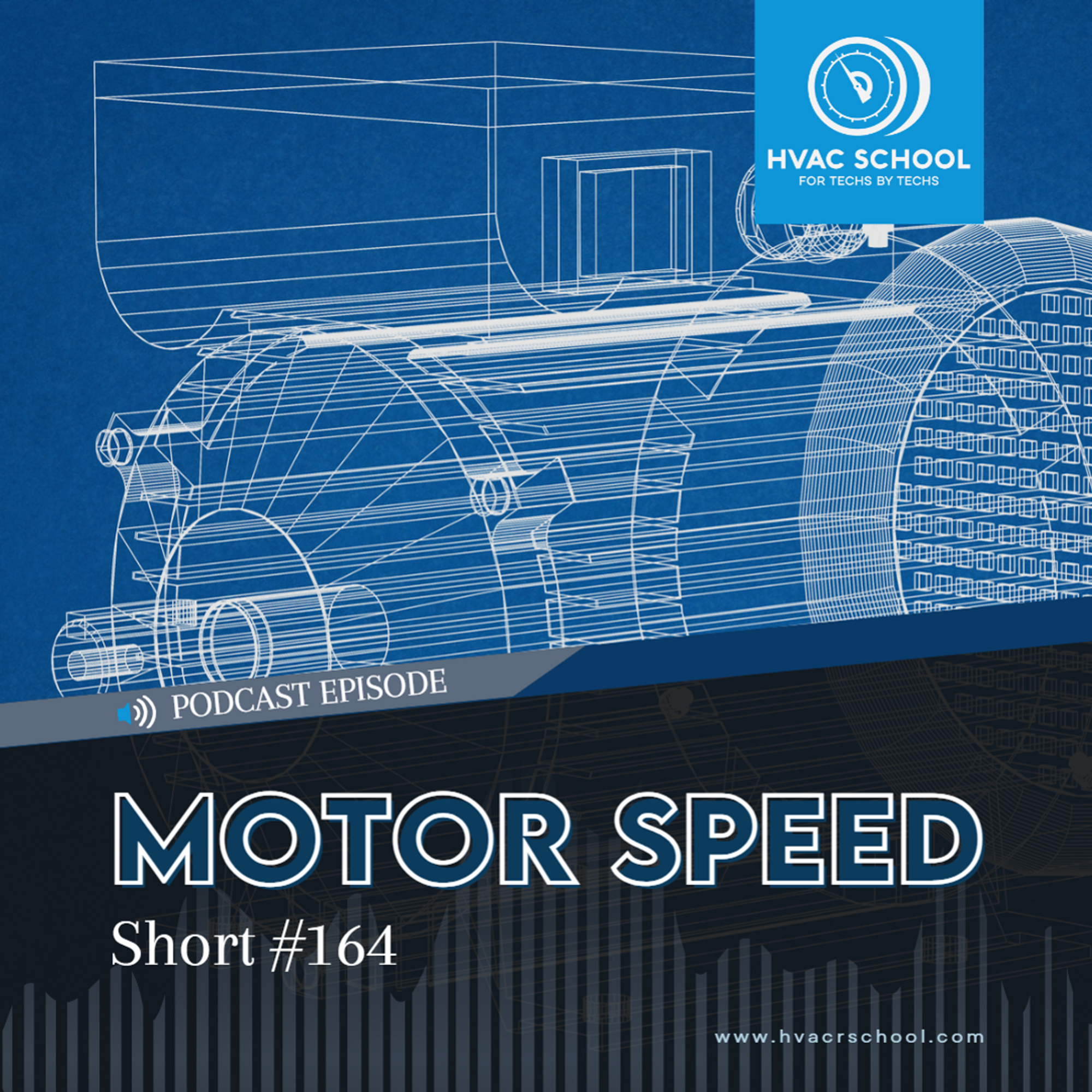Motor Speed – Short #164

In this short podcast episode, Bryan talks about motor speed and other basic electrical topics as they relate to motors in HVAC equipment.
In a typical single-phase PSC-type (induction-driven) motor, the speed is primarily determined by the electrical cycle rate, also known as the hertz. The hertz represents the speed at which the electrical current changes direction (positive to negative) per second; in the USA, that number is typically 60 hertz. Unless we're dealing with ECMs and VFD-driven motors, the motor speed will be partially influenced by the hertz or frequency as determined by the utility company or a generator.
Motor speed is also determined by the number of magnetic poles in the motor. A motor doesn't make a complete revolution per cycle; a cycle only refers to the distance between two poles. The more poles we have, the shorter the distance needs to turn per cycle. A two-pole motor rotates all the way every cycle, resulting in 3600 RPM under no-slip conditions (synchronous speed). A four-pole motor has half the RPM, and an eight-pole motor has 1/4 of the RPM of a two-pole motor.
Speed taps add winding resistance between run and common to create slip and slow the motor. A six-pole motor has 1200 RPM synchronous, but 1075 is the effective speed with slip factored in. Each speed has a different level of winding resistance, which slows the motor as you move from high to low; the lower-speed tap has higher resistance than high-speed taps.
ECMs and VFD-driven systems convert the frequency and don't depend on the electrical frequency from the utility or generator.
Learn more about the HVACR Training Symposium or buy a virtual ticket today at https://hvacrschool.com/symposium.
If you have an iPhone, subscribe to the podcast HERE, and if you have an Android phone, subscribe HERE.
Check out our handy calculators HERE.








Comments
To leave a comment, you need to log in.
Log In